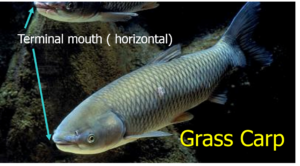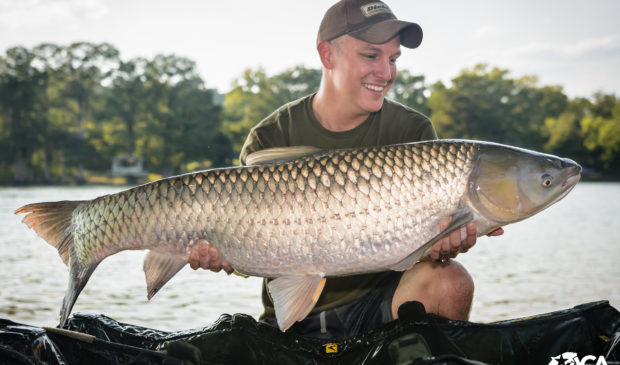Plan to reduce grass carp in Lake Austin sparks new concerns for anglers
Friday, September 9, 2016 by
Mose Buchele, KUT Standing next to Lake Austin, watching the wake of passing motorboats lick the shoreline, you likely wouldn’t think there was anything amiss. But just below the water’s surface, many of the creatures that call the reservoir home are struggling for survival.
“It’s loss of habitat, it’s loss of food, it’s loss of a lot of things,” says Kevin Olivier with the group Austin Carp Angler.
Anglers, like Olivier, report that fish are getting skinny and sickly. Environmental studies show that vegetation has disappeared. Mortality has increased among some species.
The reason? In 2011 the city of Austin started stocking large numbers of sterilized grass carp in the lake. A video of the project posted online illustrates how Austin officials hoped the fish would fight a massive spread of the Hydrilla plant.
Between 2011 and 2013, over 30,000 carp were pumped into Lake Austin. The fish ate the Hydrilla, then started in on all the other plants.
“We’ve had reports from bass anglers where carp were actually coming out of the water and picking leaves off trees,” says Olivier.
Anglers say the city put too many grass carp in the lake, though city of Austin scientist Brent Bellinger says that “depends on what you were trying to accomplish.”
He says the Hydrilla plant can damage vital infrastructure, so the goal was to remove as much of it as possible to protect the Tom Miller Dam. Reports from 2011 also focused on how the plant was a nuisance to boaters and swimmers. From that standpoint, Bellinger says, the grass carp program was a success. Nonetheless, it did have some unfortunate consequences.
“Now we’re taking the next steps to help the system bounce back and recover,” says Bellinger. “We’re going to start removing triploid grass carp by one of the most effective (strategies), which is angling.”
To put it another way, anglers are now allowed, even encouraged, to kill the grass carp that were introduced.
“We’ve been hearing rumors that the bow fishermen are itching to get out there, which can be a very effective method also for removal,” says Bellinger.
Carp anglers, like Olivier, are generally in support of the new policy, although some worry it could create collateral damage.

Photo of grass carp characteristics courtesy of TPWD
“We need to be sure that people know that grass carp are the problem – not common carp, not small mouth buffalo (fish), which are
commonly mistaken as carp,” says Olivier. “One being the problem; one being just an unfortunate victim of the situation.”
Added to that worry is the fear that recent flooding has already pushed large numbers of grass carp downstream into Lady Bird Lake, where they might further disrupt the ecosystem.
“I’ve been fishing Lady Bird Lake for 15 years, and 15 years ago you didn’t see a grass carp,” says Keith Thompson, another fisherman with Austin Carp Angler. During a carp fishing competition on Lady Bird Lake last February, he says, one team caught 15 grass carp.
“They caught no (other kind of) carp,” says Thompson. “Just grass carp.”
Bellinger says the city is working on outreach to educate people on the new grass carp policy and is monitoring the waters of Lady Bird Lake to see how many grass carp have moved downstream from Lake Austin.
This story is the result of a partnership between the Austin Monitor and KUT. Photo courtesy of Austin Carp Angler
The Monitor’s work is made possible by donations from the community. Though our reporting covers donors from time to time, we are careful to keep business and editorial efforts separate while maintaining transparency. A complete list of donors is available here, and our code of ethics is explained here.
You're a community leader
And we’re honored you look to us for serious, in-depth news. You know a strong community needs local and dedicated watchdog reporting. We’re here for you and that won’t change. Now will you take the powerful next step and support our nonprofit news organization?




